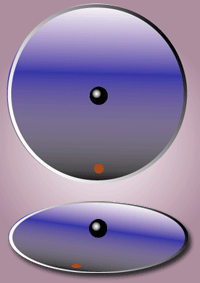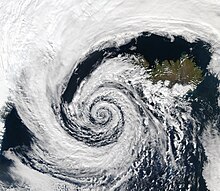
Back Corioliskrag AF تأثير كوريوليس Arabic Efeutu Coriolis AST Koriolis qüvvəsi AZ Сіла Карыяліса BE Кориолисова сила Bulgarian कोरिओलिस बल BH কোরিওলিস প্রভাব Bengali/Bangla Nerzh Coriolis BR Efecte de Coriolis Catalan


The Coriolis effect is a force that is found in a rotating object. Gaspard Gustave de Coriolis first described the Coriolis effect in 1835 using mathematics. The Coriolis effect can best be seen in hurricanes. In the Northern Hemisphere, they spin counter-clockwise (because the earth spins counter-clockwise), and in the Southern Hemisphere they spin clockwise.[1]
One example of the Coriolis effect that is often described is that water flows down a drain in the opposite direction in the northern and southern hemispheres. However, in reality, the force of the Coriolis effect is not strong enough to see in such a small amount of water. [2]
- ↑ NOVA PBS Official (2013-07-19), The Coriolis Effect, retrieved 2018-03-20
- ↑ "Gyres and the Coriolis effect". Blue Planet: Infobursts. British Broadcasting Corporation. Archived from the original on 4 July 2013. Retrieved 6 October 2013.